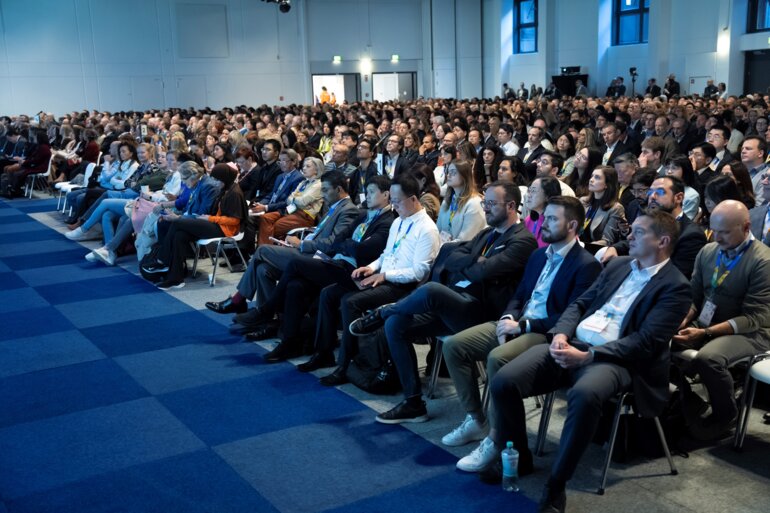The innovative approach was successfully tested on NY-ESO-1 and promises to bypass some current challenges in the identification of T cell receptors for therapeutic use
Published in Science, a study provides a strong proof-of-concept that generative artificial intelligence (AI) can offer a valid alternative approach to design precise, functional, and adaptable peptide–MHC (pMHC) binders capable of redirecting T cell responses against cancer antigens (Science. 2025 Jul 24;389(6758):380-385).
Using an AI platform, developed by a team from Technical University of Denmark (DTU), Kongens Lyngby, and The Scripps Research Institute, La Jolla, USA, researchers successfully designed “minibinders” for the cancer-testis antigen NY-ESO-1 presented by HLA-A02:01 and extended these findings to a patient-specific melanoma neoantigen presented by HLA-A01:01. These “minibinders” could be incorporated into therapeutic formats, such as chimeric antigen receptors (CARs), enabling engineered T cells to engage target cells and trigger effector functions, including cytotoxicity.
Relying exclusively on knowledge of the target, the presented strategy holds potential to bypassing the complex methodology of current T cell receptor discovery, which depends on a human T-cell repertoire.
“The implications of these findings are considerable: if validated in vivo, such “minibinders” may become powerful tools to expand the reach of T cell–based cancer immunotherapy,” says Dr Marco Donia, National Center for Cancer Immune Therapy (CCIT-DK), Herlev, Denmark, commenting on the study. “Conventional strategies to isolate T cell receptors are slow, technically demanding, limited by the human T cell repertoire, and often limited by cross-reactivity. By contrast, this platform generated functional binders within weeks, integrating in silico specificity screening that may help reduce the risk of off-target toxicity, a well-known hurdle in TCR engineering.”
Despite the AI-guided method is promising, important questions remain. “In silico screening cannot completely exclude off-target recognition, and caution is warranted regarding potential toxicities,” continues Donia. “Moreover, “minibinders” are fully synthetic proteins, and their immunogenicity in vivo is unknown. Their long-term impact on immune cell function also requires investigation. Translation into the clinic will demand rigorous testing in relevant animal models and, ultimately, carefully designed clinical trials. Finally, while this technology may accelerate discovery of new binders for cell therapies, future applications will still face the same hurdles as current personalised approaches, including regulation, manufacturing, logistics, and specialised administration requirements.”
AI & Digital Oncology: Resources in one place
Looking for further insights into how artificial intelligence and digital tools are impacting oncology? The ESMO AI & Digital Oncology Hub brings together expert perspectives, research updates, and thought leadership from across oncology.
It is a space where you can stay informed, discover resources, and follow the conversation on digital innovation in cancer research and treatment.
To further explore the transformative potential of AI in oncology, the very first ESMO AI and Digital Oncology Congress 2025, taking place from 12 to 14 November, will provide a dedicated platform focused on the latest advances in AI and digital technologies in cancer care.


